Menu

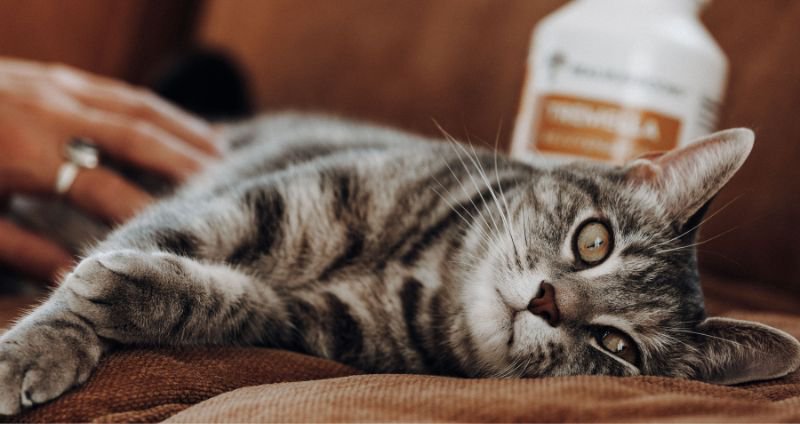
Enhance your cat's well-being with 5 steps to create a stimulating environment that meets their instinctual needs and reduces stress-related health issues. These cat enrichment tips are the keys to ensuring your feline friend remains happy long-term.
It is said that “Dogs come when called, but cats take a message and get back to you.”
What is it about our feline friends that makes them so different? The answer is that humans only recently domesticated cats (in relative terms).
Archeological evidence supports that wild canids (early wolf-dogs) began the process of domestication around 65,000 years ago when they started hanging around the camps of humans. Our domesticated cats began that process fairly recently, around 10,000 years ago. This coincided with the period of human settlement into agricultural villages. These farming humans needed their stored grain protected from vermin.
Enter Felis catus.
The real question is: have cats EVER been domesticated? What makes cats so different from our domesticated dogs is that they still possess many of the wild instincts they had just a short 10,000 years ago. But, they necessarily gave up many of their wild behaviors in return for a warm bed, regular food, and water. Most human companions expect their cats to remain indoors, meaning no more roaming all night long, getting into fights, hunting rodents, and making more kittens. However, when a cat cannot behave instinctually due to the constraints of its captivity, they can develop behavior issues and/or medical issues.
In many ways, our domesticated cats are, in fact, captive wild animals. If you think of them in that regard, it helps to explain why it’s crucial to enrich their environment. You can help avoid stressful behavior or medical problems triggered by their stressful or tedious environment.
One of the more threatening health conditions common to cats is bladder crystals and the resultant cystitis. One of this condition’s main risk factors is environmental stressors (the other is diet, namely dry kibble or highly processed canned food). When this condition occurs in a male cat, it can destroy its kidneys or even kill the cat from the urinary crystals blocking the urine outflow from the bladder. Providing a stress-free environment is crucial to help avoid this disease.
Other negative behaviors and health conditions related to a cat’s living conditions or lack of stimulation include:
As a practicing veterinarian these past 40 years, the biggest lesson I’ve learned from my feline patients, is that they have heightened instinctual senses and reactions. The best way to manage a cat as a patient is to create a “feline-friendly” environment in the clinic.
I used natural lighting, high ceilings, and bright and friendly colors on the tile floor and walls. We didn’t perform flea treatments or use pesticides in my holistic and integrative practice in Boulder, Colorado. Additionally, I factored in more time with my patients, so the atmosphere in the clinic wasn’t rushed or time-centered. My shortest appointments were 30 minutes, and my longest, for cancer consults were 90 minutes. I made these changes to my hospital long before the more recent, patented, Fear Free™ practice model existed.
I would treat my patients on a mat on the floor in the exam room, where I sat down with them. It made my acupuncture treatments much easier, with less nervousness on the part of the animal. Everyone who entered my office would say, “What a cool office, Doc!”. This was no accident. I had incorporated the concepts of environmental enrichment starting 20 years ago when there wasn’t even a term for it yet. As a veterinary acupuncturist, this was necessary to keep my patients cool, calm, and collected.
This concept of cat enrichment has only been discussed in the veterinary literature in the past 10-15 years. It is a relatively new concept and followed the rise of emphasizing animal welfare and the establishment of a Behavioral Medicine specialty in vet med.
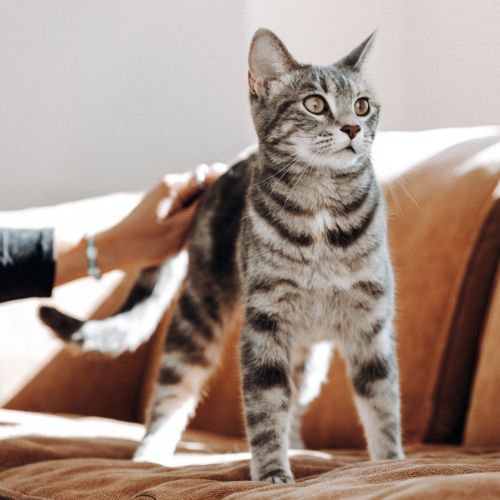
This approach to optimizing the health of the feline was established by a panel of feline behavioral experts from the American Association of Feline Practitioners (AAFP.com) and the International Society for Feline Medicine (ISFM.com) in 2013 (1).
These five guidelines for cat enrichment will help you create an environment to serve your domesticated feline’s emotional, physical, and existential needs.
Cats find safety and comfort by having a safe place in the house. If the household has multiple cats and other species of pets, then each cat needs their own special haven to feel safe. This is a place where they can retreat to feel protected. These safe areas are also great places for rest and sleeping. Cardboard boxes, perches, and raised shelves can serve well as safe places.
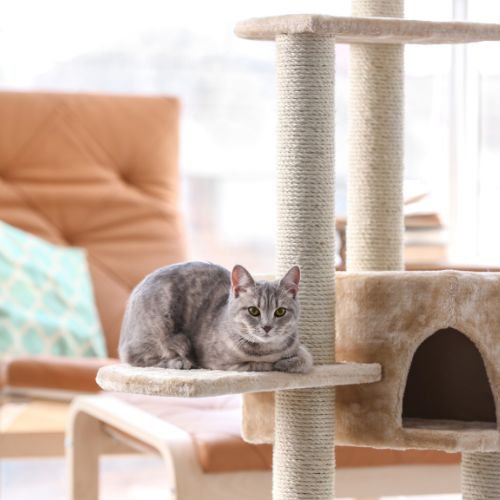
This is especially true in multiple cat/pet households given the potential competition for these resources. Additionally, if there are dogs in the household they might want to eat your kitty’s food or mess up its litter box when searching for tasty fecal snacks. So, provide multiple locations for your cat’s activities and separate access in multi-pet households.
Each resource should be placed in its own location, separate from other ones. Your cat should have a choice for each resource, with a minimum of two resting areas, two feeding areas, and two toileting areas. Further, separate food and water resources from each other. Providing individual eating locations allows for the privacy needed to prevent stress associated with feeding competition.
In single-cat households, the cat still needs privacy during eating. There may be children in the house, or disruptive noises or activities that can stress a single cat in its household as much as in a multi-cat household.
What about cats that can go outdoors? Many outdoor locations lack safety, whether from traffic, predacious animals, other cats, or people. If you have a safe outdoor location, then similar recommendations as those for indoor cats are true. For instance, outdoor access to fresh water from multiple sources is ideal; outdoor toileting areas can include rakeable areas, or sand or soil the cats can dig in, and so on.
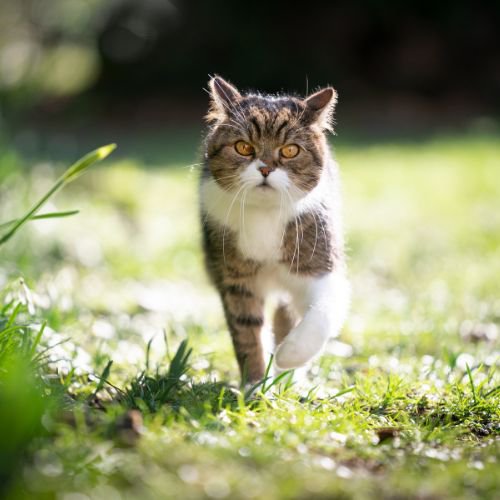
Our cats are only recently domesticated, and retain many of their instincts from when they were wild animals. The wild cats’ play and predatory behaviors were preparation for hunting and surviving. Your adorable little kitty is a tiger inside and needs to express that wild behavior. Pseudo-predatory activities as well as play activities are ideal for meeting that instinct. Cat enrichment includes allowing for these behaviors by providing an environment, toys, and structures (such as scratching posts) to tame that wild tiger in your sweet little kitty. Her mental and physical health (and your couch upholstery) will benefit.
Remember: Cat toys can be as simple as a long piece of yarn. What’s important is that you spend the time engaging your cat by playing with them.
Cats are companion animals. They have adapted to life with us, and natural selection favors the survival of amiable and human-friendly cats. We select cats as pets for companionship (I’m referring to pet parents, not breeders or show cats). Therefore, cats who are aggressive, or excessively fearful, rarely make it as pets.
As companion animals, cats benefit from regular, friendly, and predictable social interactions with humans. Handling and socializing cats from a very early age is the best way to create positive behaviors, reduce fears and stressors, and build a strong human-cat bond. Positive physical interactions are essential to having a friendly and loving kitty.
Remember: Do not use physical correction or behavior modification to train your cat. Maintain a paw-sitive and low-stress relationship with your feline friend with positive reinforcement techniques only.
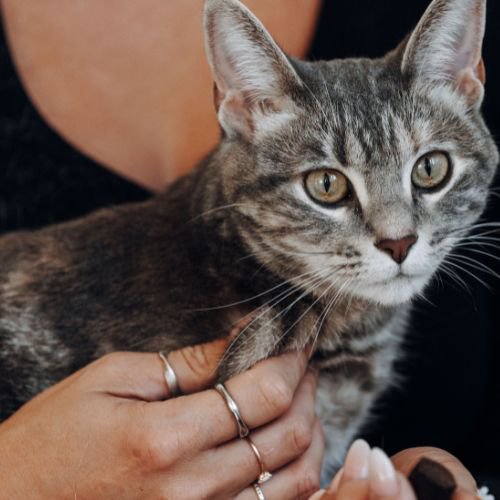
Cats are very tuned into smells. Their olfactory system is much more acute in its sensitivity than humans. It’s probably on a par with dogs. Commonly cats use this olfactory sense to “scope out” an area for its smells, as a way of evaluating the safety of their environment. Not only do they smell possible toxic chemicals or other dangers, but they will also smell the “pheromones” of other cats and animals.
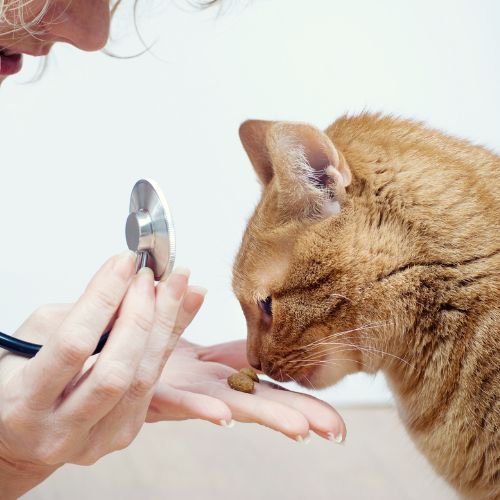
Here are some suggestions from Special Article 1 by the American Association of Feline Practitioners regarding methods to keep your environment smelling good for your favorite feline.
Environmental enrichment for your indoor cat isn’t a luxury, it’s a necessity for the continued physical and mental health of your feline friend. Environment enrichment is as important as giving your cat wellness supplements such as functional mushrooms to maintain health. This is a surefire approach to build and maintain your kitty’s health.

Disclaimer: The information or products mentioned in this article are provided as information resources only, and are not to be used or relied on to diagnose, treat, cure, or prevent any disease. This information does not create any patient-doctor relationship, and should not be used as a substitute for professional diagnosis and treatment. The information is intended for health care professionals only. The statements made in this article have not been evaluated by the Food and Drug Administration. Any products mentioned are not intended to diagnose, treat, cure, or prevent any disease. The information in this article is intended for educational purposes. The information is not intended to replace medical advice offered by licensed medical physicians. Please consult your doctor or health practitioner for any medical advice.
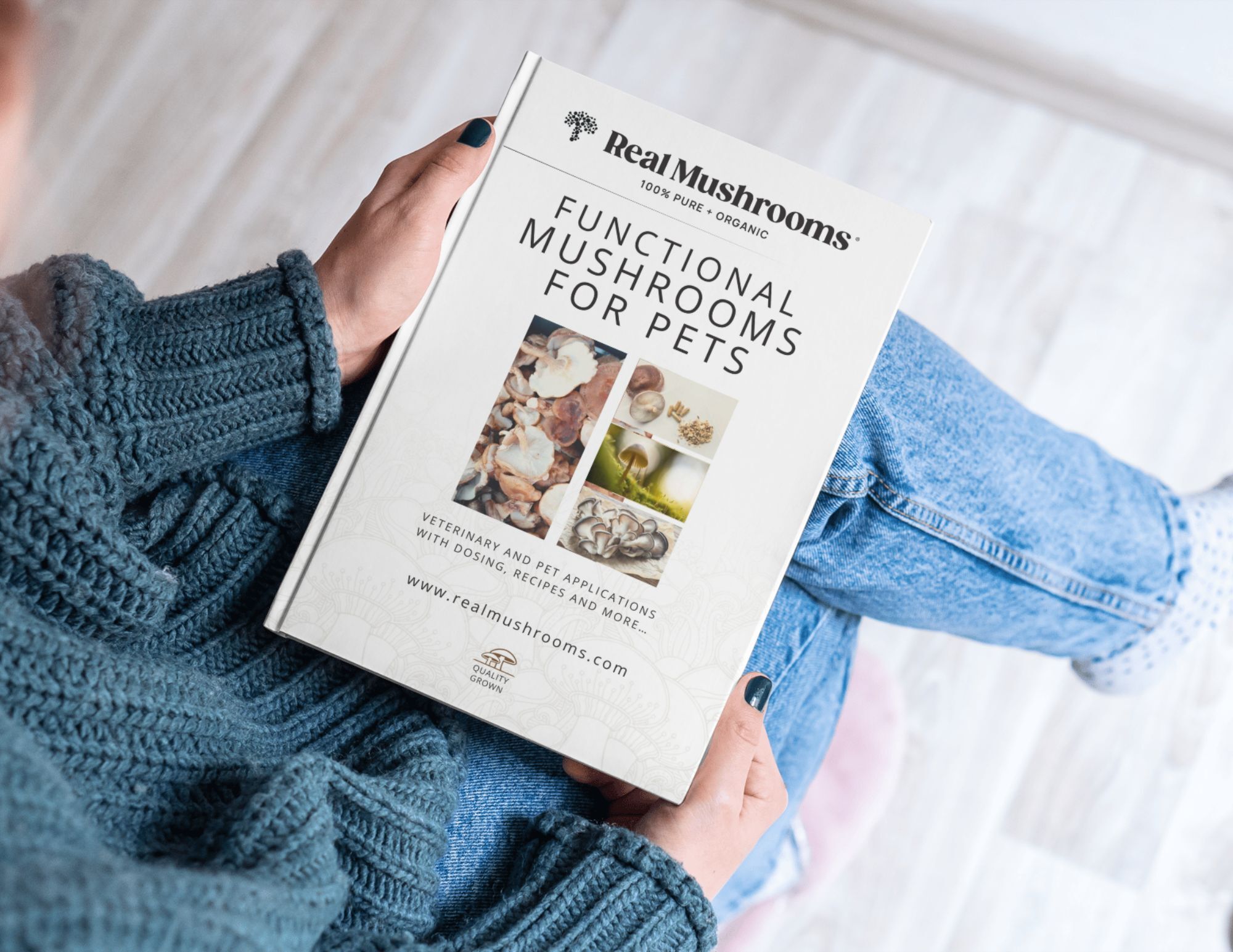
– Plus, Enjoy Exclusive Tips and Updates with Our Real Mushrooms for Pets Newsletter